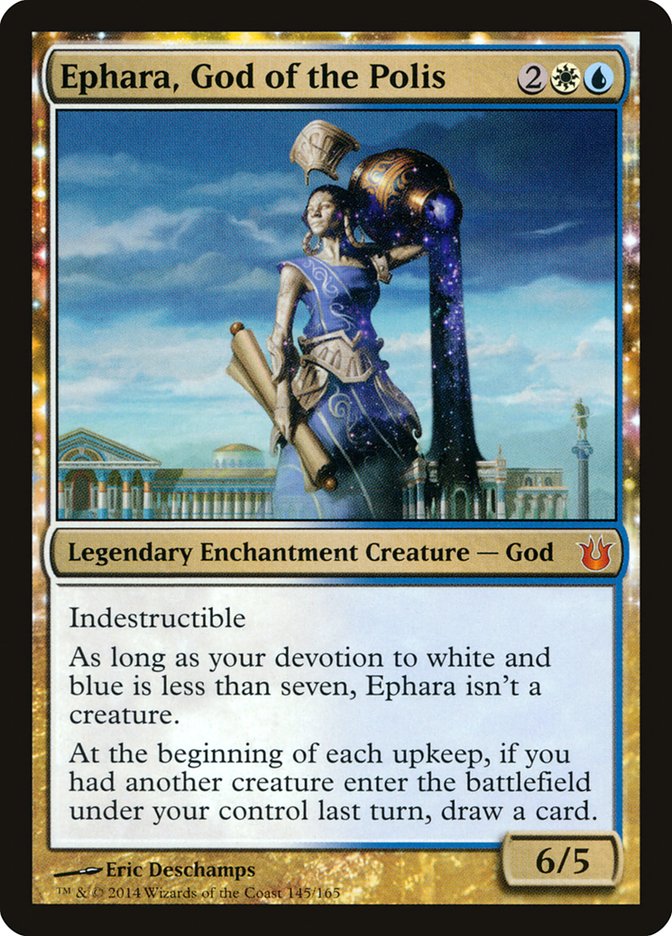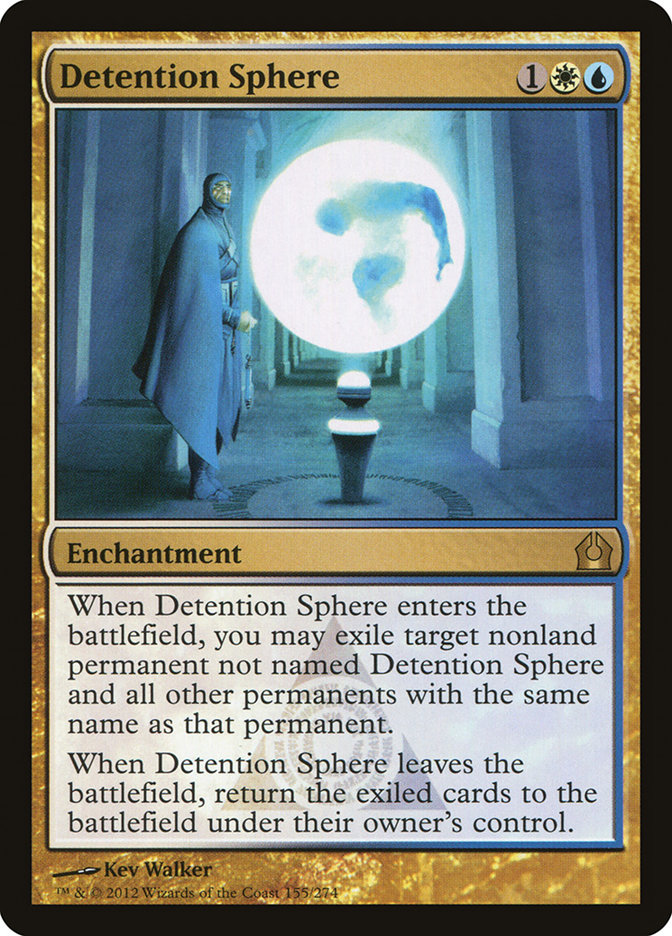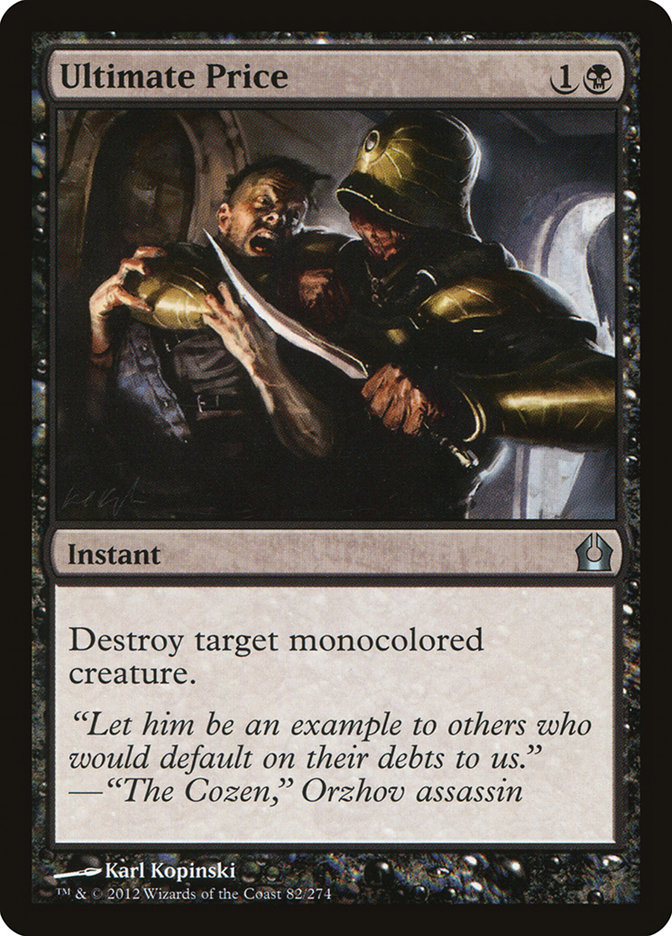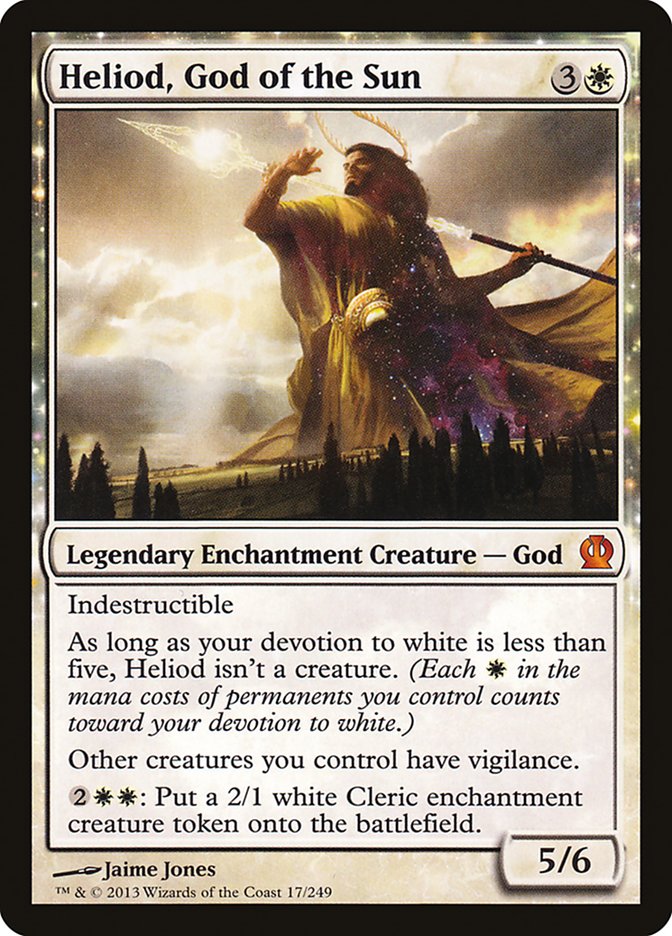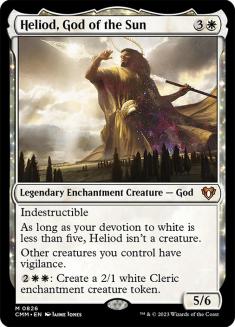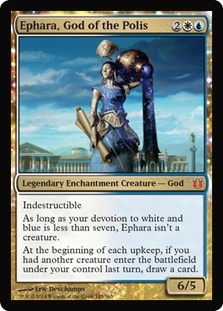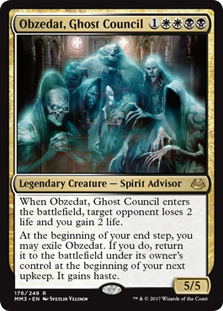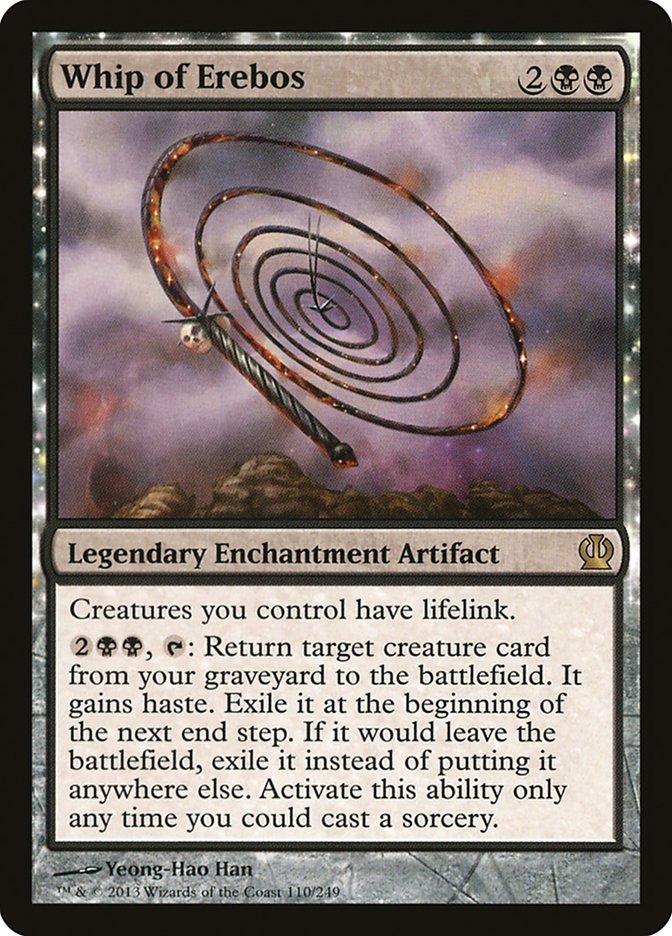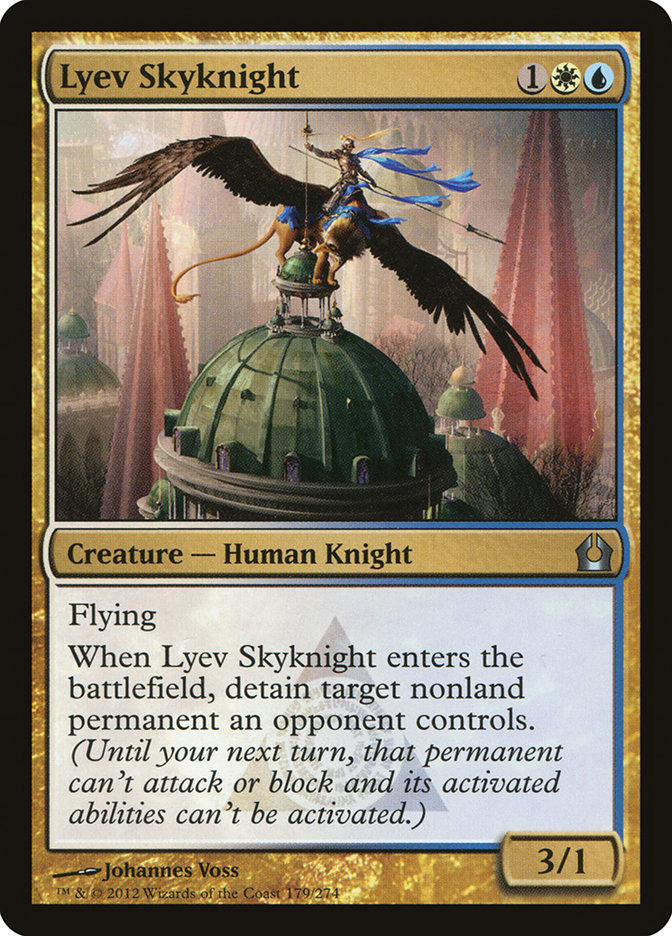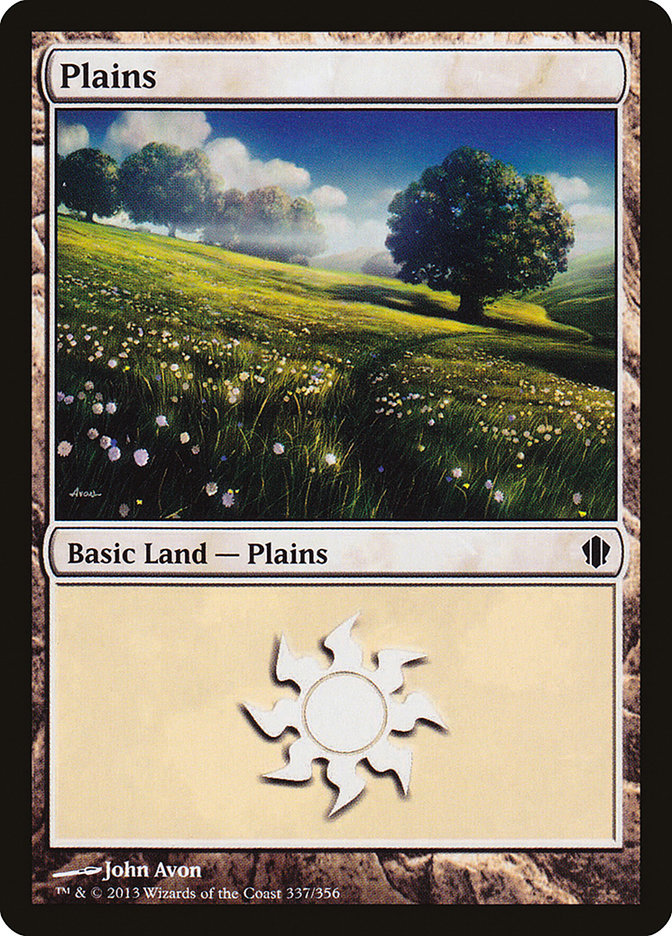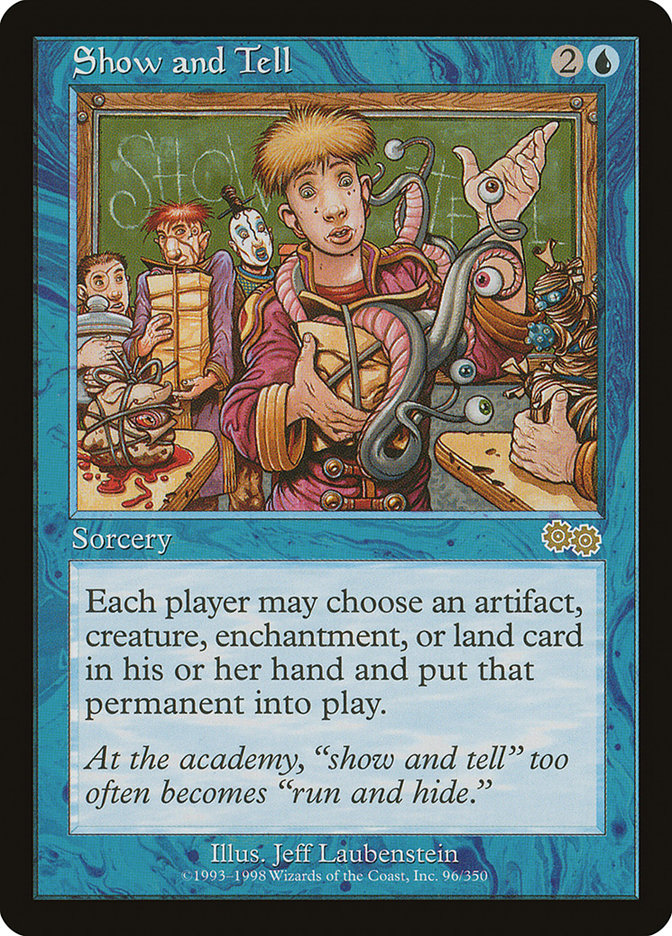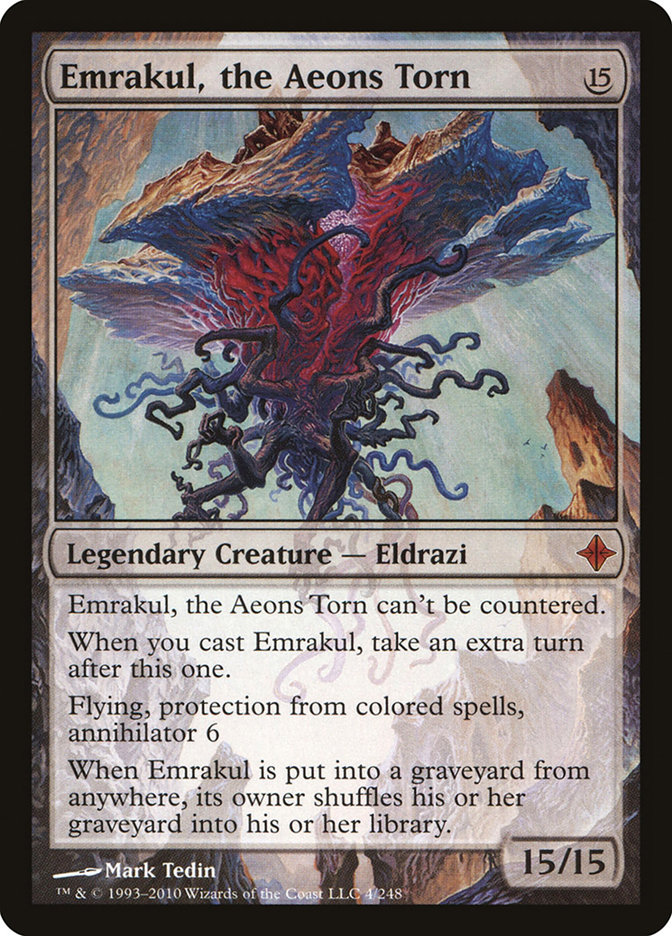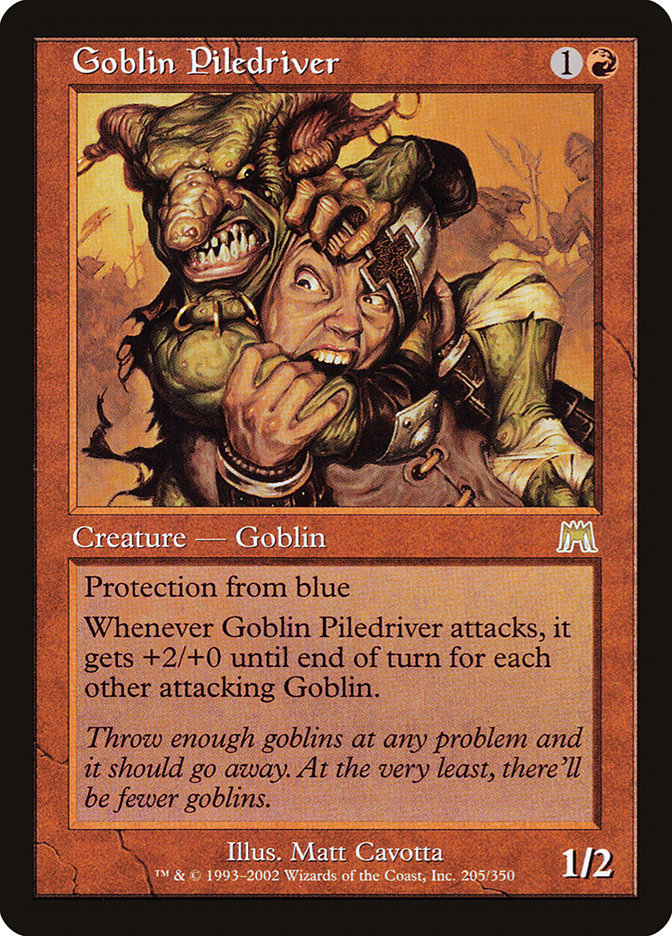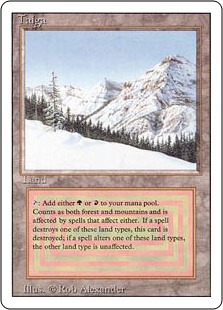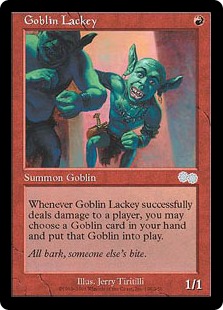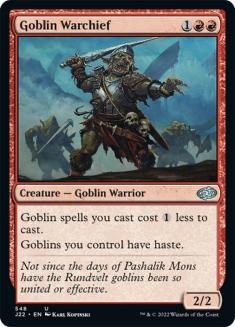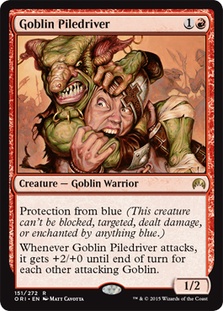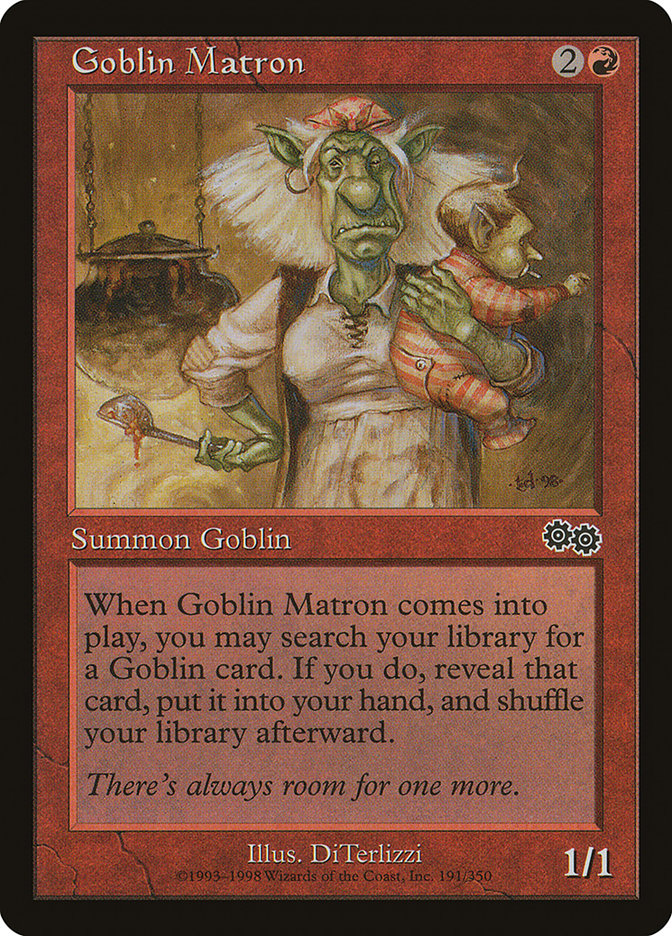My Stony Brook Roller Hockey hoodie. Chicken parmesan. Glassjaw’s Everything You Ever Wanted to Know About Silence. Sandy Pond’s par 3 golf course.
Everyone has things that are comfortable to them in their life. Things you know and love that have been around forever. These things are the things that you can go back to time and time again and will never let you down.
They are also things that can limit your growth and leave you wondering "maybe I should try some other foods and expand my palette" or "maybe I should learn how to hit my driver and play a hole where I can’t hit the green with one swing of my 9 iron."
Magic is the same way. I’ve already begun my search for a new Legacy deck, and last week I decided to register a deck in Standard that didn’t start with four copies of Sphinx’s Revelation.
Creatures (24)
- 4 Lyev Skyknight
- 4 Precinct Captain
- 3 Obzedat, Ghost Council
- 2 Imposing Sovereign
- 1 Heliod, God of the Sun
- 4 Soldier of the Pantheon
- 3 Ephara, God of the Polis
- 3 Brimaz, King of Oreskos
Lands (25)
Spells (11)

Because this tournament was just a local event with no Open Points or Pro Tour qualification on the line, I decided to have some fun and try something new. I had seen Makihito Mihara’s version of the deck a few days before the event, and it definitely piqued my interest. Despite the protests of a number of my friends who were very unimpressed, I decided to give it a spin anyway.
I really liked the idea of Ephara, God of the Polis. While the aggressive white core of Soldier of the Pantheon; Precinct Captain; and Brimaz, King of the Oreskos seems like a great place to start a deck, it’s sorely lacking in any sort of reach or late game punch in order to put the game away. Sure, Spear of Heliod does a lot of good work, and cards like Imposing Sovereign and Lyev Skyknight can help to push through some blockers. But before Born of the Gods, the deck was pretty cold to Supreme Verdict or a quick barrage of large creatures like Stormbreath Dragon and Desecration Demon.
Enter Ephara, God of the Polis.
Ephara would in theory give the deck a nice card draw engine, which could help power it through the midgame. Aside from the high creature count, Ephara also has awesome synergy with Precinct Captain and Brimaz and in the late game can turn into a huge attacker. The creatures around her in the deck seem reasonable enough and form a solid semi-aggressive core.
The deck also contains (and makes great use of thanks to the devotion requirements of Ephara) one of the best removal spells in the format in Detention Sphere. Being able to answer any number of Pack Rats, creatures, planeswalkers, and basically anything else your opponent could throw at you is a huge boon. The deck has some black removal and a big bomb in Obzedat, Ghost Council as well, which works great with Ephara and helps shore up control matchups.
This all sounds great in theory, but in practice it completely fell apart.
The deck played awful.
The most obvious problem is the deck’s extremely stringent mana requirements. Wanting W on turn 1, WW on turn 2, WU on turn 3, BB on turn 4, and WWBB on turn 5 is extremely ambitious, and the power of our aggressive white curve can be thrown off by the decision between casting Soldier of the Pantheon on turn 1 and Precinct Captain on turn 2—our tap lands don’t allow us to do both. And having to play somewhat off curve and taking considerable damage from our lands makes our aggressive matchups worse.
Most egregious of all however is the amount of cards in the deck that simply do nothing. Thassa, God of the Sea aside, for the most part all of the Gods are awful.
The most frustrating part of all the God cards (again, save Thassa because she costs three) is that they simply don’t do anything the turn you play them. I lost a match to an extremely underpowered Mono-Green Aggro deck in the Swiss where we hit the midgame with five lands in play (only one black mana) and my hand was:
I had three of the supposed best cards in my deck, and literally none of them did a damn thing. I had to cast Heliod, take a beating, and then try to make a token to chump block because that was the best play I could muster. I quickly and embarrassingly succumbed to a pair of Swordwise Centaur.
The biggest issue with the Gods is that four mana is such a crucial point in your curve. While the Gods are quite good when they are in play, actually having the time to cast them is extremely difficult when your opponent is presenting any sort of opposition.
I had assumed the curve turn 3 Brimaz into turn 4 Ephara, attack, make a token, and draw a card would be awesome, but the less than ideal scenarios are much more devastating than ideal scenarios are useful.
This fault is further exemplified with many of the other cards in the deck.
Whip of Erebos is in many ways like an even worse God. Only really useful in an extremely late game situation where you’re racing or bringing back Obzedat, Ghost Council, Whip is another card that takes a ton of time and mana to commit to the board for very little initial return. Far // Away is also a card that can be powerful, but very rarely do you get to fuse it when you really need it since it’s very overcosted.
Most surprising of all however was how unimpressed I was with Lyev Skyknight, a card I actually think is pretty sweet. Because the deck’s mana is so rough and it’s packed with cards that don’t really do much when you cast them, the tempo that you theoretically gain from Lyev Skyknight really doesn’t end up mattering at all. If anything, Lyev Skyknight simply tries to make up for the tempo lost from your other cards, in which case you are left with a three-mana 3/1 flier and wondering why you’re even playing those cards in the first place. Imposing Sovereign, another card I’m fond of, has very similar problems in this deck.
Is this deck a pile of crap? I don’t necessarily think it’s awful, but it’s a long way from being a reasonable working deck. I still think Ephara, God of the Polis has potential, but it will need to be in a deck that can take such huge advantage of her ability that the turn you need to waste casting her is worth it.
Moving To Legacy
This wasn’t my first foray into brand-new Esper waters this year. After hanging up my Goblins, I moved to Max Tietze’s Esper Stoneblade deck, with which I lost my win and in match at the SCG Legacy Open in Baltimore to end up in fifteenth place.
Creatures (10)
Planeswalkers (2)
Lands (23)
Spells (25)

I had tried the Deathblade version of the deck at the previous Open, but two key factors moved me over to Max’s version of the deck.
While Deathrite Shaman is a fantastic Magic card and turn 2 True-Name Nemesis and turn 3 Jace, the Mind Sculptor sounds awesome, the reality of the card is that very often you don’t even want to cast it on turn 1. Any time I was presented with the choice of turn 1 Thoughtseize or turn one Deathrite Shaman against an unknown opponent, I almost always chose the former, especially if I didn’t have access to Force of Will. Legacy is a brutal format, and one of the greatest strengths of a deck such as this one is its ability to interact so well with the opponent. This deck is in no real hurry and is also not extremely interested in nickel and diming the opponent’s life total.
The version of Deathblade that I was given was also playing a grand total of zero basic lands. This came back to bite me multiple times and really showed me the power of playing a deck that relies on a number of basic lands to cast its spells. One of the major ways for decks to keep you off of True-Name Nemesis or Jace, the Mind Sculptor is to hit you with a key Wasteland or two, and Max’s deck allows you to sidestep that angle of attack completely. Having the ability to reliably hit four mana allows you to play one of the best answers in the format to a huge variety of threats in Supreme Verdict alongside Jace.
However, the biggest thing I noticed about Max’s deck was that sometimes I was able to do a fantastic job of stopping my opponent from doing what they wanted to be doing but then would have no way to really press this advantage. This would allow them time to outdraw me, as I would be hanging out waiting for a way to kill them.
Legacy is a very proactive format, and I began to wonder if perhaps I’d be happier playing some sort of similar deck with access to Delver of Secrets. Has anyone tried Esper Delver yet? Lightning Bolt seems only okay with the number of True-Name Nemesis, combo, and Miracles decks floating around; perhaps adopting the U/W/R Delver shell to Esper for access to pinpoint discard is a thing.
I’m still deciding on what I want to play at the upcoming SCG Invitational in Charlotte, and there are definitely a lot of questions that need answering!
Falling Backward
Amusingly enough, my most recent Legacy tournament was an IQ two weekends ago. I was very upset that the Open Series in New Jersey got cancelled, but I was still able to get some games in at the last-minute Legacy IQ in Staten Island. However, because it was a small event and I was unable to get the cards I would have liked to have played, I was stuck with the old standby:
Creatures (30)
- 4 Goblin Matron
- 4 Goblin Lackey
- 4 Goblin Warchief
- 1 Goblin Sharpshooter
- 4 Goblin Piledriver
- 3 Gempalm Incinerator
- 1 Siege-Gang Commander
- 4 Goblin Ringleader
- 1 Skirk Prospector
- 2 Tin Street Hooligan
- 2 Mogg War Marshal
Lands (23)
Spells (7)

I know, I know—I just spent 3000+ words a few weeks ago telling you why Goblins isn’t a good deck choice anymore! But sometimes it’s all you’ve got, and you’ve gotta game. I made the move to Tarfire that I suggested and managed to Top 4 the event, making minor but critical mistakes in both my game losses in my semifinal match against RUG Delver.
The tournament was mostly uneventful, save for a very exciting match against Sneak and Show in round 2. In said match, my opponent cast Show and Tell on turn 2, turn 1, and turn 1 respectively.
If that’s not surprising enough, here’s the real gag:
I won the match.
Game 1 I was on the play with a fantastic Goblin Lackey draw, which saw me put in a free Goblin Warchief on turn 2 and cast Goblin Piledriver post-combat. On his turn 2 he played Show and Tell.
I put in another Goblin Piledriver, and my board was now:
I untapped, played a Wasteland, and then played a Mogg War Marshall. I attacked for sixteen after Emrakul, the Aeons Torn ate a Goblin Piledriver. On his turn he could almost kill me and annihilate six of my permanents, but he still would die on the swing back.
Game 2 he played turn 1 Emrakul, the Aeons Torn on the play, and I conceded.
In the final game, I had a reasonable hand with an Aether Vial and a Rishadan Port when he played Show and Tell on turn 2.
I calmly searched for a Stingscourger, ticked my Aether Vial up to two, Wastelanded him, and on his upkeep Rishadan Ported him and Vialed in Stingscourger to bounce the Griselbrand. Despite the seven cards he drew, I ended up winning a fairly long game filled with tons of mana denial.
This match made me question the validity of Confusion in the Ranks as the anti Show and Tell tech. While fantastic in most scenarios (allowing you to exchange any Goblin you have in hand or play) and also extremely useful against Omni-Tell decks (that might have Cunning Wish for Stifle), it’s much more vulnerable to a turn 1 Show and Tell than something like Ashen Rider. If Sneak and Show is the most popular Show and Tell deck, it’s possible that Ashen Rider is a better choice.
Just A Fling
All in all, though, I think she knows this was just a fling. We had some laughs and remembered the good times, but come Sunday morning she’ll be out the door with cab fare and a few bucks for breakfast.
It’s a new world out there, and I’m enjoying living in it.

